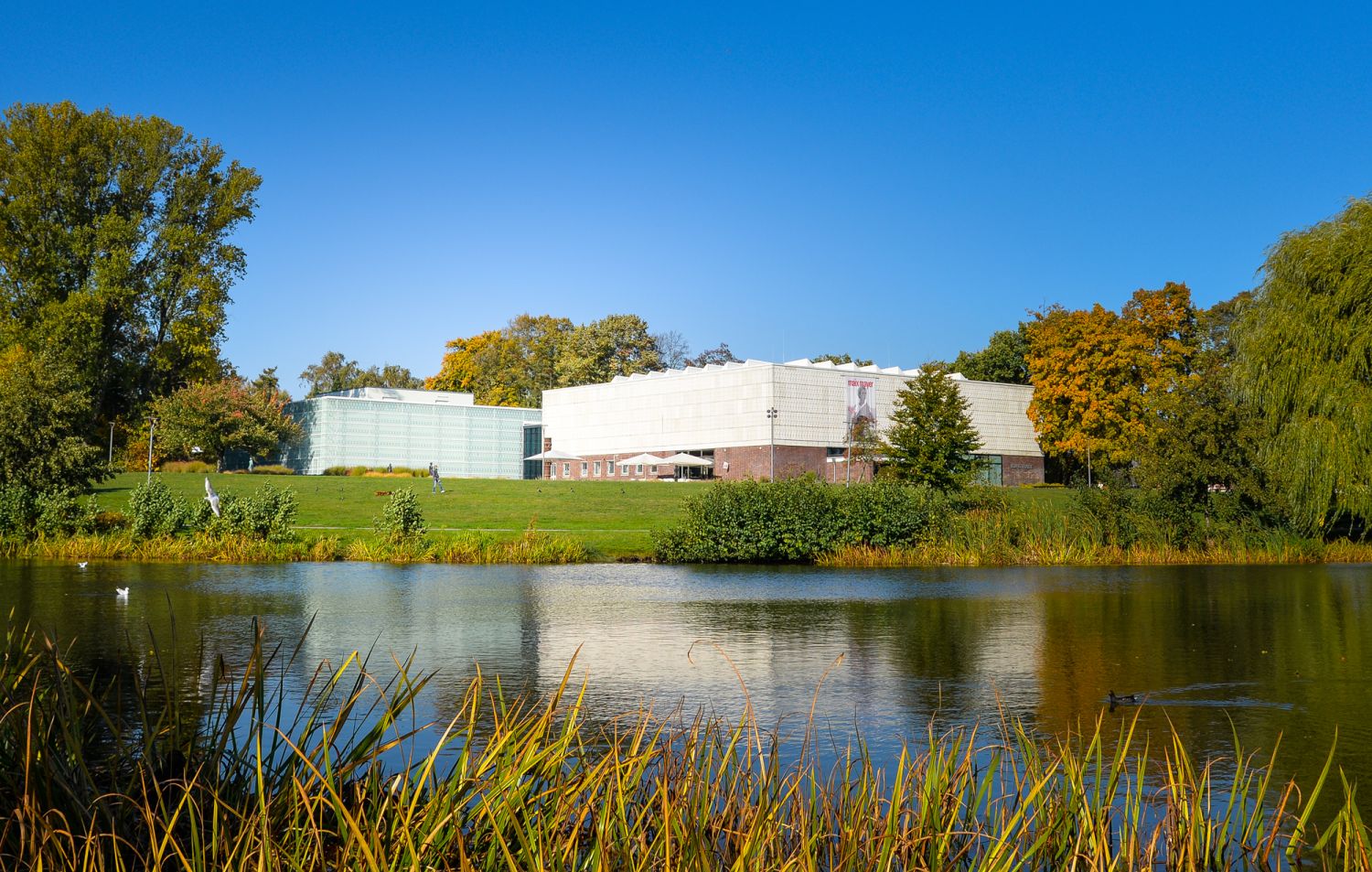
Kunsthalle Rostock
The Kunsthalle Rostock was considered a prestige object of GDR cultural policy. Conceived in 1964 and opened five years later, it was
“projected for foreign policy and cultural policy reasons …, [the Kunsthalle – author’s note] is of outstanding importance in creating a socialist counterweight to the already completed Kiel Kunsthalle, which supports the revanchist ideas of the West German imperialists through exhibitions.”
The Kunsthalle was originally intended purely as an exhibition pavilion for the presentation of the Biennale of the Baltic Sea Countries, Norway and Iceland, which was held every two years from 1969 to coincide with the Rostock Baltic Sea Week. Contrary to this conception, the founding director, Dr. Horst Zimmermann, began to build up his own collection for the Kunsthalle as early as 1964 in order to establish the building as an art museum in the following years. The typical tasks of a museum – collecting, preserving, researching and communicating – were (and still are) among the Kunsthalle’s core competencies.
The collection also includes prints by Otto Dix, Max Liebermann, Ernst Barlach, Käthe Kollwitz and Emil Orlik, as well as works by Finnish artists. In the field of sculpture, works by Joachim Jastram, Fritz Cremer, Felix Droese, Hermann Glöckner and Werner Stötzer are exemplary. Self-portraits, landscape painting and depictions of daily working life dominate the works in the painting collection. Among them are paintings by Oskar and Otto Manigk, Kate Diehn-Bitt, Rudolf Austen, Susanne Kandt-Horn and Carl Lohse.
Since 2009, the Kunsthalle Rostock has been run by a private association under the direction of Dr. Jörg-Uwe Neumann. Since then, nationally and internationally renowned artists and photographers have exhibited in the tradition-rich house on the Swan Pond: among them Arno Rink, Gerhard Richter, Arnulf Rainer, Georg Baselitz, Richard Serra, Norbert Bisky and Eugenio Recuenco. In addition to the already established artists, the Kunsthalle team also focuses on young artists and on works from the Scandinavian and Baltic regions.